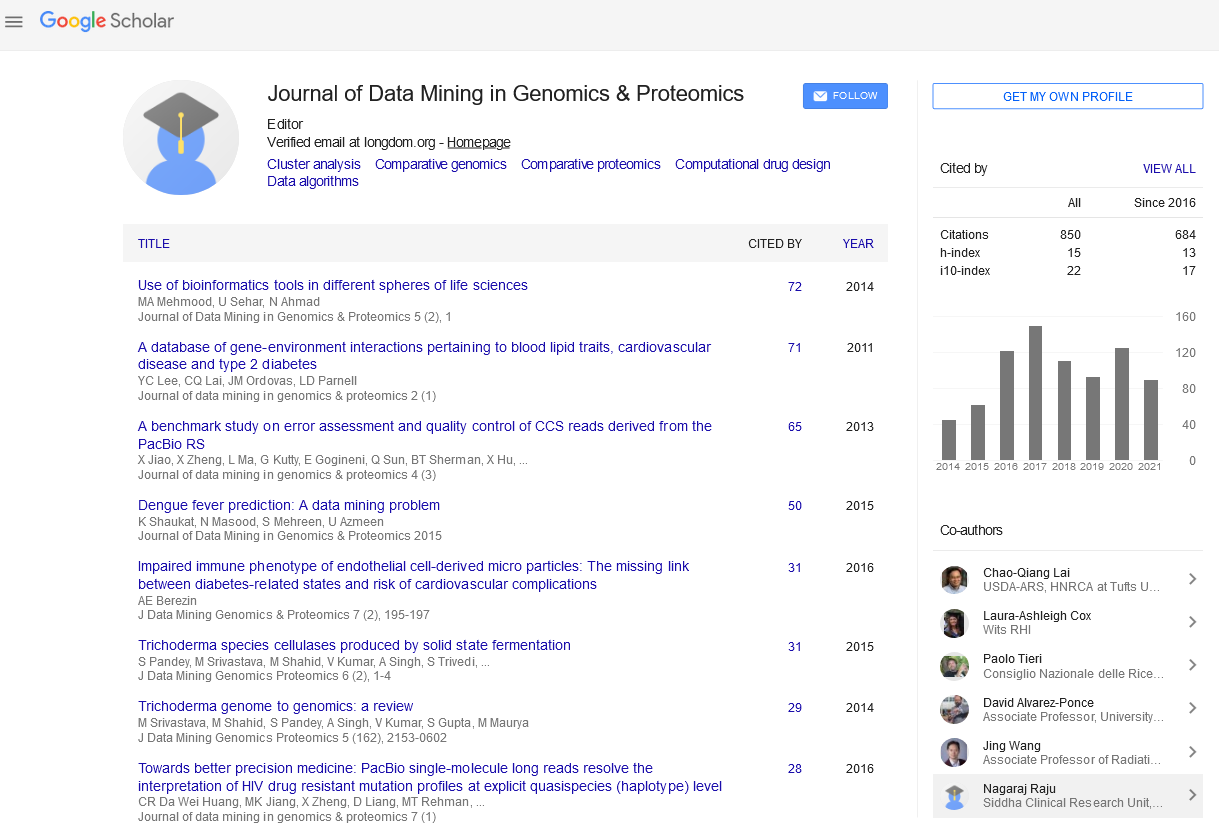PMC/PubMed Indexed Articles
Indexed In
- Academic Journals Database
- Open J Gate
- Genamics JournalSeek
- JournalTOCs
- ResearchBible
- Ulrich's Periodicals Directory
- Electronic Journals Library
- RefSeek
- Hamdard University
- EBSCO A-Z
- OCLC- WorldCat
- Scholarsteer
- SWB online catalog
- Virtual Library of Biology (vifabio)
- Publons
- MIAR
- Geneva Foundation for Medical Education and Research
- Euro Pub
- Google Scholar
Useful Links
Share This Page
Journal Flyer

Open Access Journals
- Agri and Aquaculture
- Biochemistry
- Bioinformatics & Systems Biology
- Business & Management
- Chemistry
- Clinical Sciences
- Engineering
- Food & Nutrition
- General Science
- Genetics & Molecular Biology
- Immunology & Microbiology
- Medical Sciences
- Neuroscience & Psychology
- Nursing & Health Care
- Pharmaceutical Sciences
Abstract
The Highest Mutation in mtDNA Hypervariable Region and Application of Biostatistics with Nucleotide Base X t-n in Determining the Identity of the Mutation through a Transition Intensity Matrix
Human mitochondrial DNA (mtDNA) have been used intensively in the field of forensic identification of victims or suspects of crime through biological evidence. The number of mtDNA molecules in a single cell are in the tens of thousands which enable analysis of samples very little or damaged. Till now there is no standard method for identification using mtDNA in a mass disaster victims such as natural disasters, wars and accidents so that the identification process can not run fast. This study found C16.223t variants in mtDNA sequences that can be used to divide the database into two groups so as to accelerate the process of identification through a mathematical algorithm. This variant has the highest frequency (29.7%) of the 91 polymorphic human mtDNA HVS1 along the 300 nucleotide (16,024-16,324) derived from the NCBI database as much as 142 sequences. MtDNA sequences obtained from data collection Papuan human mtDNA groups that have been published in the NCBI. The next variant that can be used as a classifier in a row in the sequence is 16,311; 16,304; 16,189; and 16,270 with the identity (T→c). For a matrix Q is reversible so the matrix and could have the opposite diagonal. Thus the above equation can be solved by using the diagonal method that can be written: ܳ = ܵ רܵ െ1 . This equation could count the number of transitions and transversion substitution mutations that occur in a nucleotide sequence of mtDNA. With this grouping, the database can be reduced so as to accelerate the process of identification of samples. Expected method of grouping by the variant with the highest frequency can be developed in the codification database for forensic interest such as the police or the mtDNA database purposes of study anthropology and evolutionary biology.


